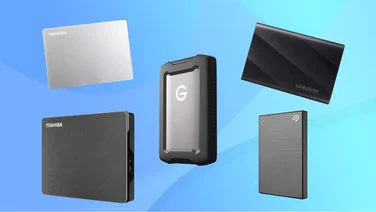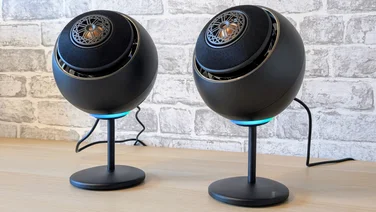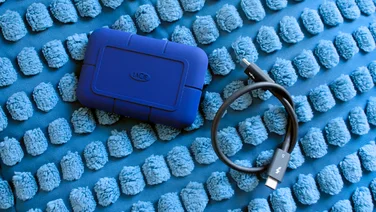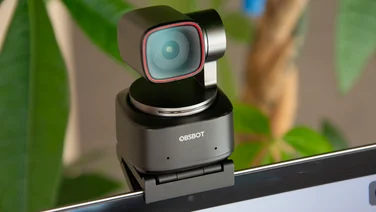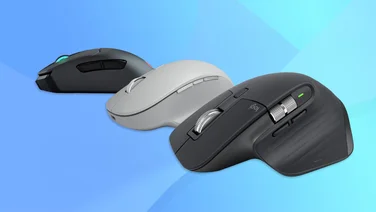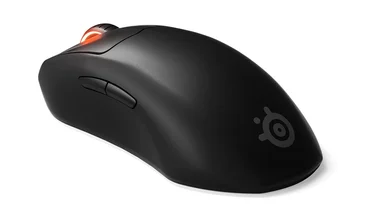To help us provide you with free impartial advice, we may earn a commission if you buy through links on our site. Learn more






Zotac’s Zbox mini PC is based around Intel’s latest Atom platform: Pine Trail. Confusingly, the Zbox also carries Nvidia’s Ion branding. Previously Nvidia made the entire chipset, but this latest iteration of Ion uses an Intel chipset with the addition of Nvidia graphics. Here we’re looking at the barebones version, which comes without memory or a hard disk.
Physically the Zbox is fairly compact, it’s a square block measuring 188x44x188mm. It’s equally happy lying down on your desk like a Mac Mini, sitting upright in the provided vertical stand, or hanging from the back of a VESA compatible monitor – using a supplied bracket. The central body is made of rather cheap looking silver plastic, this is sandwiched by two convex gloss black panels – which pick up fingerprints far too easily.

The upper (or left-hand) panel is fixed, and includes a glowing ring around a Zotac logo. The lower (right-hand) panel is held on by two small thumb screws. Once undone, it can be slid off, which reveals the Zbox’s innards. There’s a bay here for a 2.5in laptop hard disk. This just slots in and is secured by a little hinged flap – which itself is held down securely by another thumbscrew.
There are two slots for laptop-style SODIMM memory modules. Each can take a 2GB DDR2 module, with support for up to 4GB in total. These cost around £30 each, though we can’t see anyone needing more than 2GB of memory in a PC like this one.
There’s no optical drive included, and so you’ll need an external drive to boot from and install Windows – you can pick one up for as little as £20. Alternatively, you could install a Linux distribution, such as Ubuntu, directly from a flash drive or USB hard disk.
There are six USB ports for adding peripherals: four on the back, one on the front and one on the top. There’s also a memory card reader with support for all the common types of smaller cards; and an eSATA port for adding fast external drives. HDMI and DVI-I ports mean you can run two monitors, and a simple adaptor will let you use a single monitor with VGA-only input. A Gigabit Ethernet port is present for fast file transfers. As with most mini PCs, the Zbox also has built-in 802.11n wireless networking.


You can output audio via the stereo line out, which is positioned on the front, making using it a little messy; on the rear is an optical S/PDIF. Alternatively, you can use the HDMI port, which can output 7.1 lossless PCM audio. The Zbox doesn’t support HD audio bitstreams such as Dolby True HD directly from a Blu-ray movie; and its 1.3 specification means it isn’t suitable for 3D video either.
Video playback, even of high bit-rate HD files, was flawless thanks to the built-in Nvidia Ion graphics chip. It’s not up to playing recent 3D games however, scoring just 6.9fps in our Call of Duty 4 test, and failing to reach playable frame rates even at 1,360×768 with anti-aliasing disabled – simply put, the Zbox is no Xbox.
The Zbox comes with a modestly-powered integrated Atom processor. It’s one of Intel’s faster chips in fact – the dual-core D525 running at 1.8GHz. We ran our benchmarks in Windows, which resulted in a score of 28 – it may not sound like much, but it’s a big step up on most netbooks which only score around 17.
Disappointingly, it’s not passively cooled, instead there’s a small fan inside to keep everything from overheating. Fortunately it’s not very loud, and you’ll barely notice it in a living room while watching movies.

At £190 the barebones Zbox offers decent value for money, and prices should drop after release. Adding 2GB of RAM and a 250GB hard disk will bring that price up to around £255 – which is well below the £305 that a roughly equivalent Asus Eee Box EB1012P will cost you. However, once you factor in around £80 for Windows 7 Home Premium, you end up paying around £30 more for the Zbox.
If you want to specify your own hard disk and RAM, or you’re happy to install a free operating system (such as Ubuntu) then the Zbox makes a great deal of sense. It’s a well-designed little PC with a relatively quick Atom processor and plenty of ports. It’s ideal for web-use and media playback – as long as you don’t need Blu-ray HD audio or 3D support. We like it, but if you want typical components and Windows 7 then a ready-to-go box is more cost-effective.

